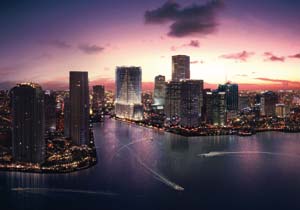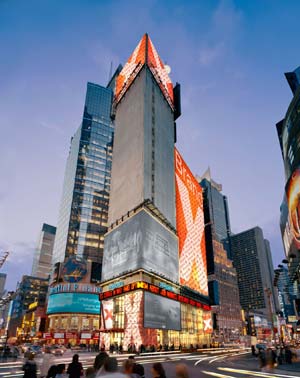A 3ds Max user for ten years, Chris Hobbs, application specialist at CADline, recently started using Maya. But which is the right product for in design visualisation users?
3ds Max is a product that has been under the Autodesk umbrella for many years, since the acquisition of the original development company, Kinetix. During the intervening years it has been traded under the company name of Discreet, which has itself been reabsorbed into Autodesk as the Design Media and Entertainment department.
Maya has been owned and developed by a company called Alias which was acquired by Autodesk earlier this year, making Autodesk the market leader in modelling and animation.



Positioning
I have searched high and low to find a definitive message on how these two products sit within the Autodesk portfolio and in this article I will attempt to simplify it, or at very least try and aim you in the right direction.
With any major software acquisition the same questions reverberate around the industry; ýWhy has Autodesk acquired Alias?¯
ýSurely Max is in direct competition with Maya, donÝt they do the same thing?¯, and ultimately, ýHas Autodesk bought Alias to shelve Maya, or even replace Max?¯
In the main, they do perform many of the same tasks; they can model, render, animate and create a headache for most IT departments! They do have their subtle differences and as with most competitive products, they have their strengths and weaknesses.
The straight answer to the last question is neither. Those of you that keep an eye on such things will be well aware of the precedence set with the purchase by Autodesk of the Revit Corporation five years ago. For those of you that havenÝt heard of Revit, it was a product that was in direct competition with Architectural Desktop in the architecture and construction market. Autodesk acquired the software and has been developing them in parallel, with no intention of shelving either product. They have taken ideas from each and shared them with the other, improving both products. The differentiation that has emerged has been one of mindset rather than feature list. This is something that I am sure we will see happen to Max and Maya.
After spending the best part of 10 years using Max in various industries I have now started to use Maya and have found a lot of similarities in the way the products work. In Max we use the transform gizmo to move, rotate and scale an object, a function that is mirrored by a similar tool in Maya. Right clicking an object in both products will produce intelligent sub-menus that are only relevant to the selected objects. I find using Maya very familiar, with some features in which I still prefer the Max approach, whilst in others I find the Maya approach a refreshing improvement. Both products are now using Mental Ray as the secondary rendering engine.
Technical
comparison summary
Max has become extremely popular in both the architectural and visualisation industries, an approximate sales split in these industries compared to Maya is around 80/20. In the games and TV/Broadcast industry itÝs about 50/50 and in the Film industry itÝs about 80/20 in MayaÝs favour.
Max has advantages over Maya with regards to the architectural and visualisation markets in terms of conceptual modelling tools, low-level polygonal modelling (vital for real-time applications), large scale environment creation (level edits, AEC scene visualisation), as well as interoperability with other Autodesk product lines. In the gaming, TV/Broadcasting areas Max has strengths that include Ùout of the boxÝ character rigging, motion capture handling, and animation layering.
So what are the strong points of Maya? Well, after a relatively short period of becoming acquainted with Maya, I would be inclined to say that its main strength lies in NURBS modelling. Although Max can adequately model NURB surfaces, it is quite hard to use and so most MAX users rely on 3rd party products for surfacing. Maya has a different approach to NURBS modelling which seems to flow much easier than Max, and if asked to make a comparison with anything, then I would say it is closer to the tools and approach of Rhino. For those of you unfamiliar with NURBS, they are potentially complex surfaces that have a very low face count. For example, create a sphere using polygons and in making it smooth you might end up with over 100 faces. By using a Nurb Surface to create the same shape you are only dealing with a single face.
Maya is also known for its fluid effects. This element of the software will allow the user to realistically simulate how fluids and gasses would react in real world environmental conditions. The type of effects that can be achieved are pyrotechnics such as fire, explosions and nuclear blasts; space including clouds, steam, mist, fog, smoke; and viscous effects which include molten lava and mud. The fluid effects also include an Ocean Shader for creating realistic open water and we can see how objects would look and react when floating or sinking. The closest weapon in the Max arsenal is the Reactor tool, which is good in some areas of object interaction but not as effective at fluid dynamics. Ancillary advantages include the advanced character rigging in Maya which will allow the user to totally customise the rig in a much easier way than achieving the same result in Max.
Maya has a great tool called Paint Effects which will allow the user to draw free-hand on a surface; the software will add a 3D paint effect and there are plenty of effects that come standard with the software ranging from grass through to neon strobe lighting. The tool makes seemingly complex and impressive after-effects very quick to achieve.
Maya will also run on Windows, Mac, and Linux platforms whereas Max is only available for Windows based systems. MayaÝs latest incarnation – release 9 – is 32- and 64-bit, as is 3ds Max Release 9.
Conclusion
So getting back to the original question, ‘Which product is right for me?’ If you are in the Architectural and Visualisation industries then I would still say Max is the right tool. However, if your software budget can stretch far enough, then I would also suggest purchasing a seat of Maya. Maya has some great tools that will propel your visuals to a cut above the rest. Using the paint tools, and fluid effects, your walkthrough can become hugely more realistic. Imagine creating an animation with a pond in the background that is rippling around a floating object, or water trickling down rocks, these are the kind of things that can be achieved using Maya.






